Astronomy Photographer Of The Year: 32 Cosmic Images That Will Send Shivers Down Your Spine – Forbes

László Francsics from Hungary with Into the Shadow, the Winner and Overall Winner.
László Francsics
From aurora and eclipses to planets and distant galaxies, the winning images from this year’s Insight Investment Astronomy Photographer of the Year 2019 competition are enough to send celestial shivers down your spine.
Announced by the Royal Observatory Greenwich in London, this stunning collection includes nothing if not variety. There’s a panorama of the aurora borealis over the Lofoten Islands in Norway, a man and his dog Floyd surrounded by Mars, Saturn and the galactic core of the Milky Way galaxy, and a sequence of images of Mars that follows the progress of a great dust storm.
Now in its eleventh year, the competition received a record number of over 4,600 entries, taken from 90 countries across the globe. So here they are–the galaxy’s greatest images by category, each featuring a winner, runner-up and a ‘highly commended.’
Our Moon: Winner
Hungarian photographer László Francsics won the £10,000 top prize with his ‘Into the Shadow’ image (main image, above), of which judge called “masterful.” Taken in Budapest, Hungary, the photograph depicts a creative and artistic composition of the 35 phases of the total lunar eclipse that occurred on January 21 2019. “For a single multiple-exposure image to capture this event with such positional precision, creative innovation and beauty is nothing short of masterful,” said Ed Robinson, one of the competition judges. “The colours of our atmosphere projected onto the Moon’s disc during the eclipse are not only artistically pleasing but also offer an understanding of such events that can reveal aspects of our own, thin, yet essential part of our atmosphere.”
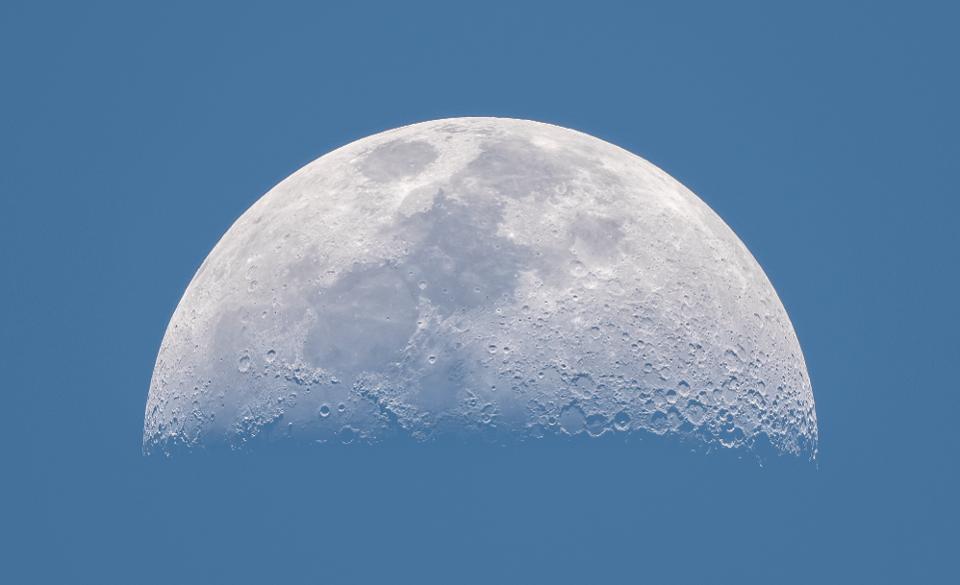
Rafael Ruiz (Spain) with Crescent Moon During the Day (Runner Up)
Rafael Ruiz
Our Moon: Runner-up
“It is not always possible to photograph the Moon with so much detail during daylight.,” says photographer Rafael Ruiz, who took the photo from Morella, Castellón, Spain. “The image depicts the lunar craters of the waxing crescent of the Moon, with the blue sky of the day as a backdrop.”
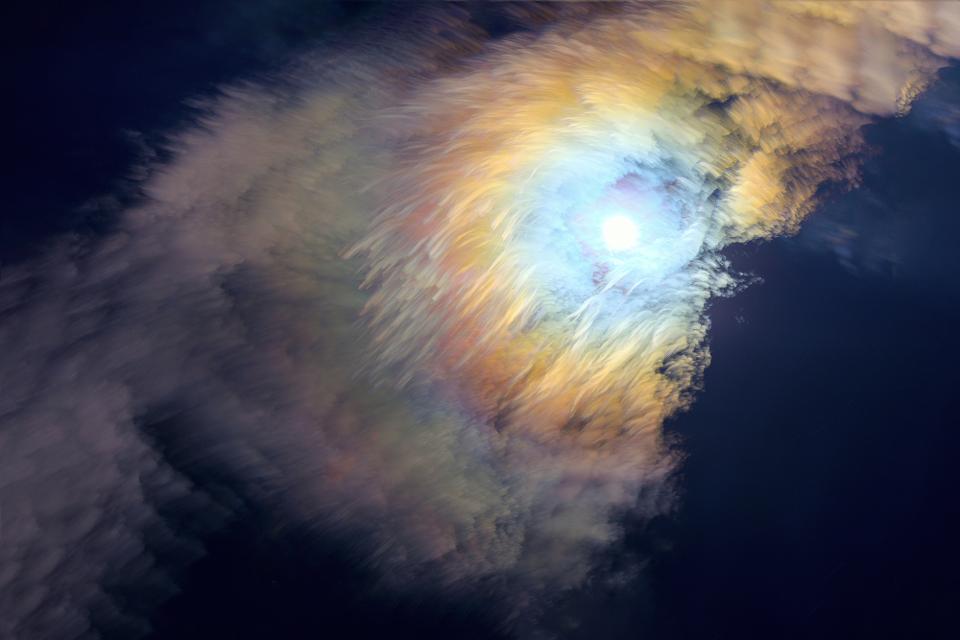
Yiming Li (China) with Seven-colour Feather of the Moon (Highly Commended)
Yiming Li
Our Moon: Highly Commended
“The image showcases the magnificent corona of the Moon and the motion of the clouds resembling colourful brushstrokes on a painting,” says Yiming Li, who took images from Dongguan, China on a Canon 6D camera and stacked them. “It resembles a seven-colour feather growing out of the Moon.”
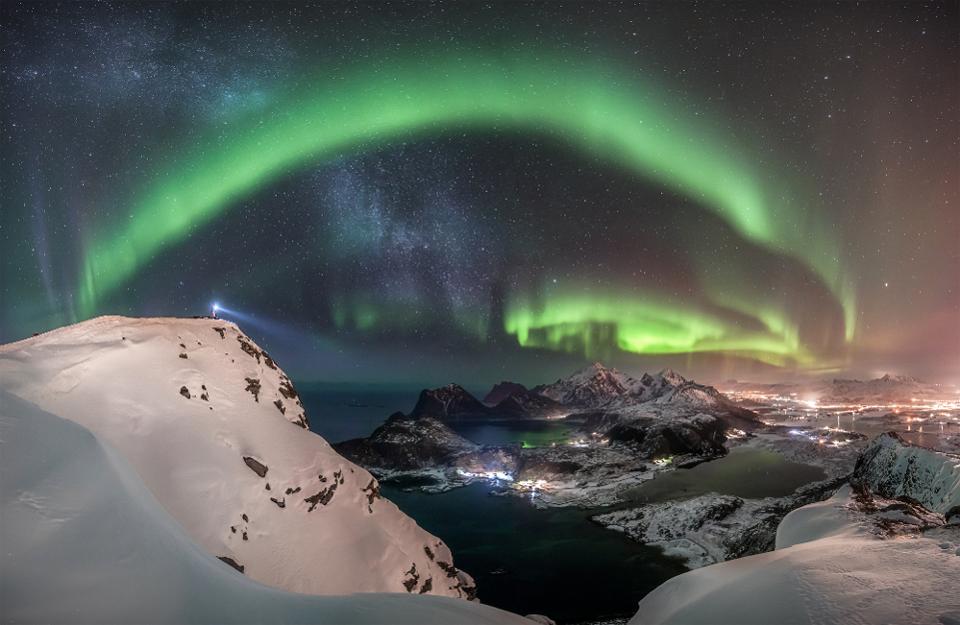
Nicolai Brügger (Germany) with The Watcher (Winner)
Nicolai Brügger
Aurorae: Winner
Nicolai Brügger from Germany hiked in the snow to the top of the mountain Offersøykammen in Norway to capture the aurora borealis over the Lofoten Islands, but only after many hours waiting.
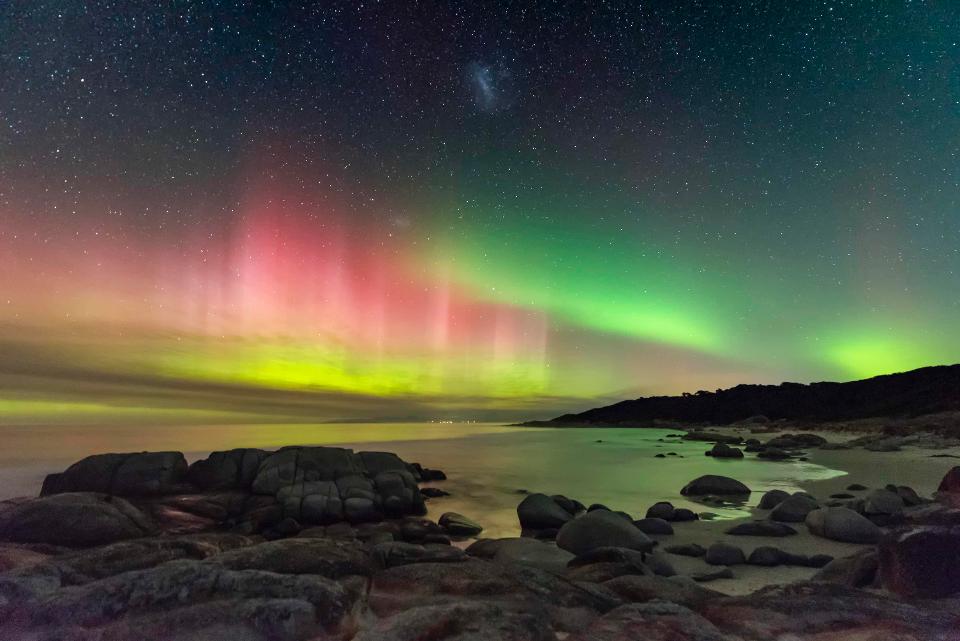
James Stone (Australia) with Aurora Australis from Beerbarrel Beach (Runner Up)
James Stone
Aurorae: Runner-up
A brightly coloured display of the Southern Lights beams high into the night sky on the east coast of Tasmania, as photographed by James Stone. The Large Magellanic Cloud also appears at the top centre of the image.
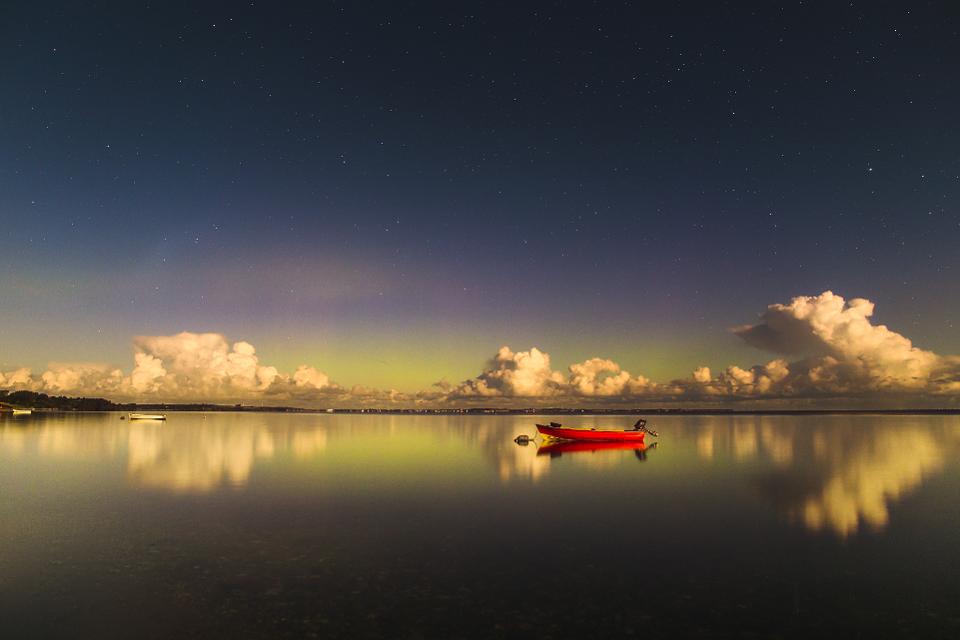
Ruslan Merzlyakov (Latvia) with The Return of Green Lady (Highly Commended)
Ruslan Merzlyakov
Aurorae: Highly Commended
Photographer Nykøbing Mors captured a green cast of aurora borealis among clouds from Limfjord, northern Denmark.
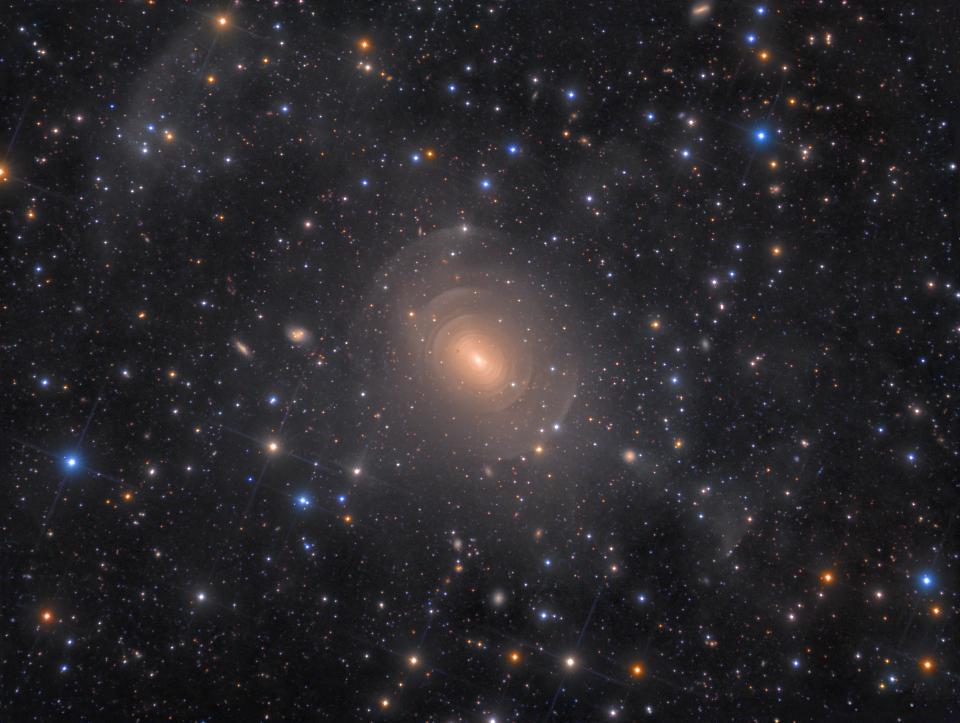
Shells of Elliptical Galaxy NGC 3923 in Hydra © Rolf Wahl Olsen (Denmark) – WINNER
Rolf Wahl Olsen
Galaxies: Winner
This is a deep image of the peculiar, elliptical galaxy NGC 3923, which features myriad concentric shells as a result of past mergers with other nearby galaxies. Recent research has documented 42 concentric shells in NGC 3923, more than in any other known galaxy. The image was taken from Auckland, New Zealand.
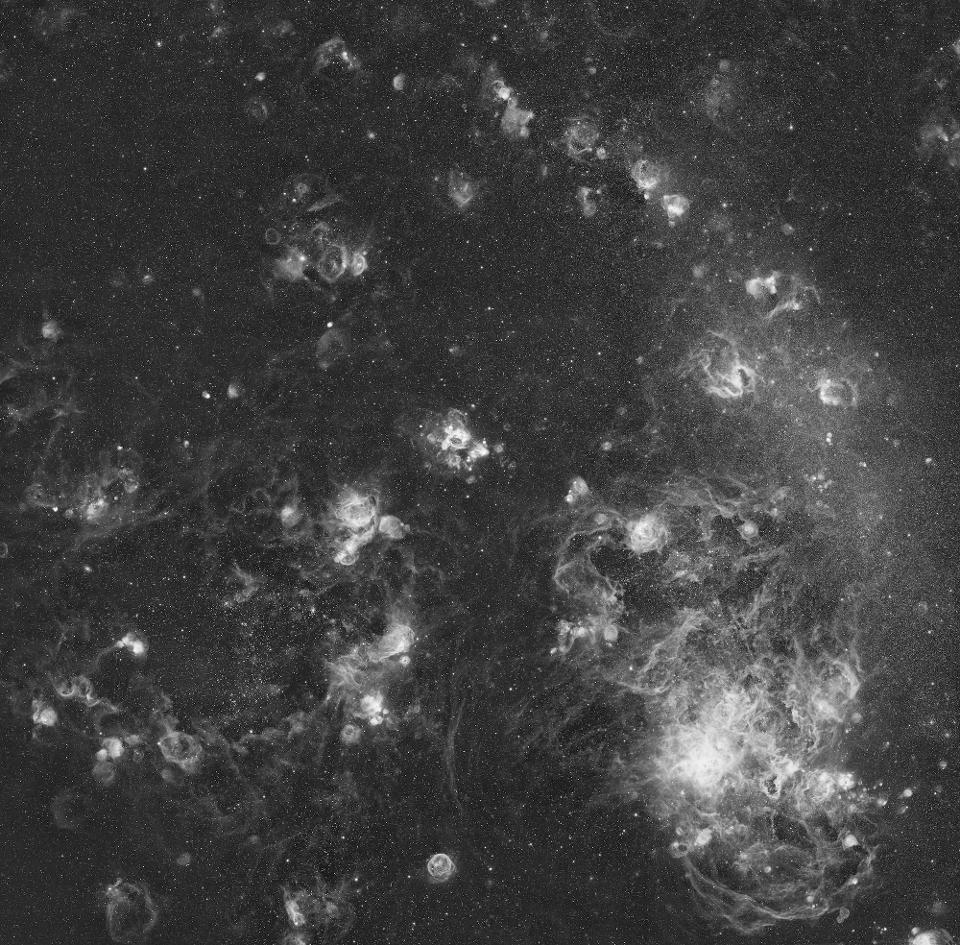
Hydrogen Sculptures in The Large Magellanic Cloud © Ignacio Diaz Bobillo (Argentina) – RUNNER-UP
Ignacio Diaz Bobillo
Galaxies: Runner-up
This is a high definition hydrogen-alpha mosaic image of the Large Magellanic Cloud from Ignacio Diaz Bobillo. The Tarantula Nebula is in the bottom right corner, with its stormy, spider-like core, surrounded by arch-like filaments. The image took 46 hours of data integration.
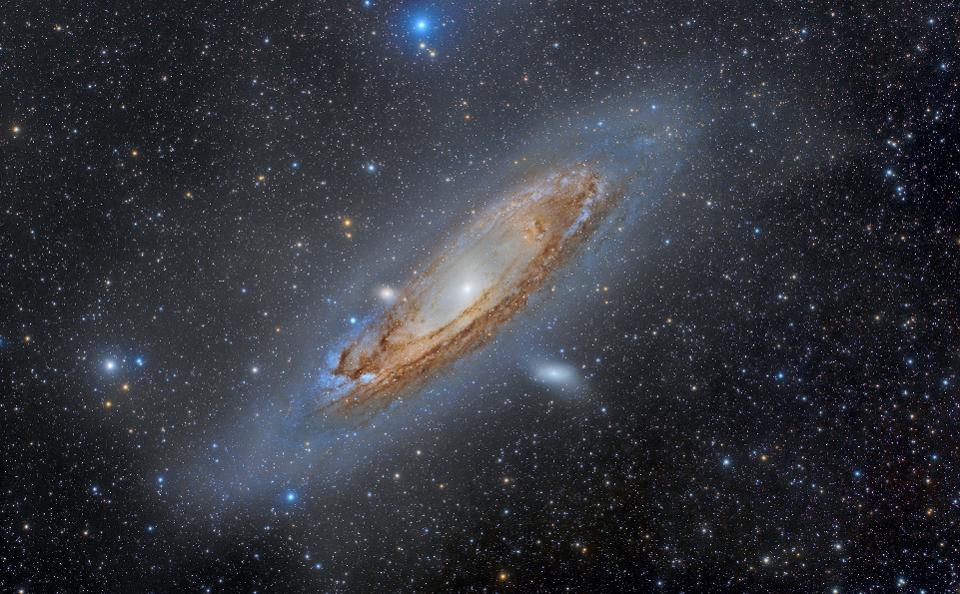
Andromeda Galaxy © Raul Villaverde Fraile (Spain) – HIGHLY COMMENDED
Raul Villaverde Fraile
Galaxies: Highly Commended
This is close-up of our neighbouring Andromeda Galaxy, taken from Castile-La Mancha, Spain, is made with a mosaic of three photographs.It also features the satellite galaxies M32 and M110. The Milky Way and Andromeda Galaxy will collide in about 5,860 million years, merging into a larger galaxy.
Our Sun: Winner
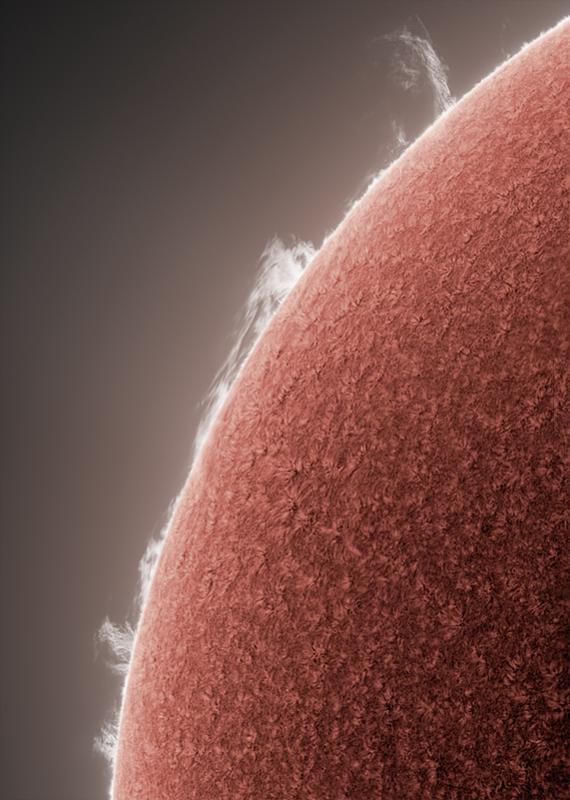
A Little Fireworks © Alan Friedman (USA) – WINNER
Alan Friedman
Called ‘A Little Fireworks,’ this image from Buffalo, New York is a close-up of the solar limb during the present “solar minimum” period of the Sun’s cycle.
A group of prominences–also known as Coronal Mass Ejections (CMEs)–are silhouetted against the background of space, while the tonality has been inverted to express depth and contrast of the features in the Sun’s chromosphere.
The data, captured by Alan Friedman using a monochrome black and white camera, has been colourised.
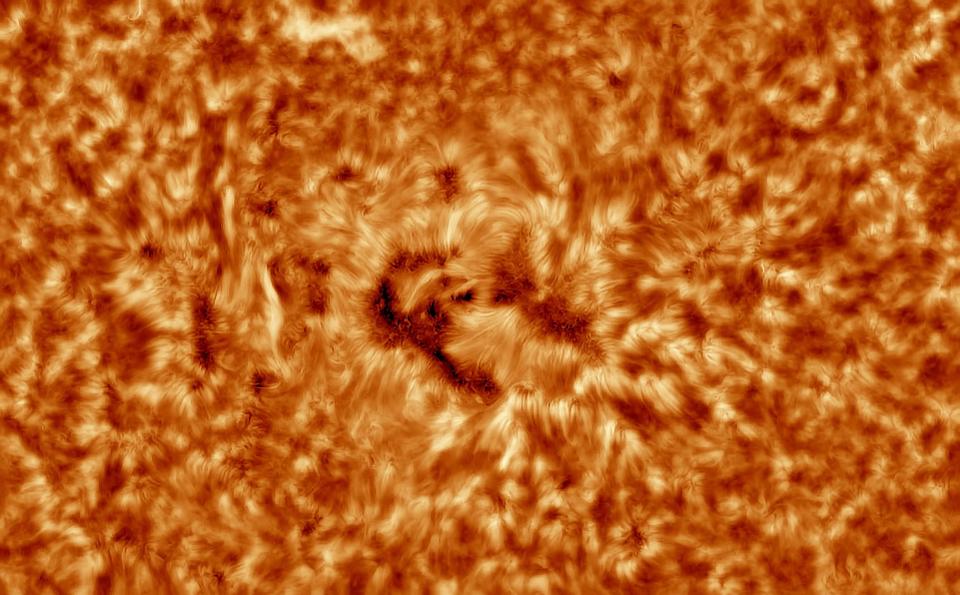
The Active Area AR12714 © Gabriel Corban (Romania) – RUNNER-UP
Gabriel Corban
Our Sun: Runner-up
The Active Area AR12714 © Gabriel Corban (Romania) – RUNNER-UP
The image from Bucharest, Romania shows a sunspot, with the different tones of colour representing the varying plasma temperature. It was shot in hydrogen-alpha frequency and is an inverted version, processed in false colours.
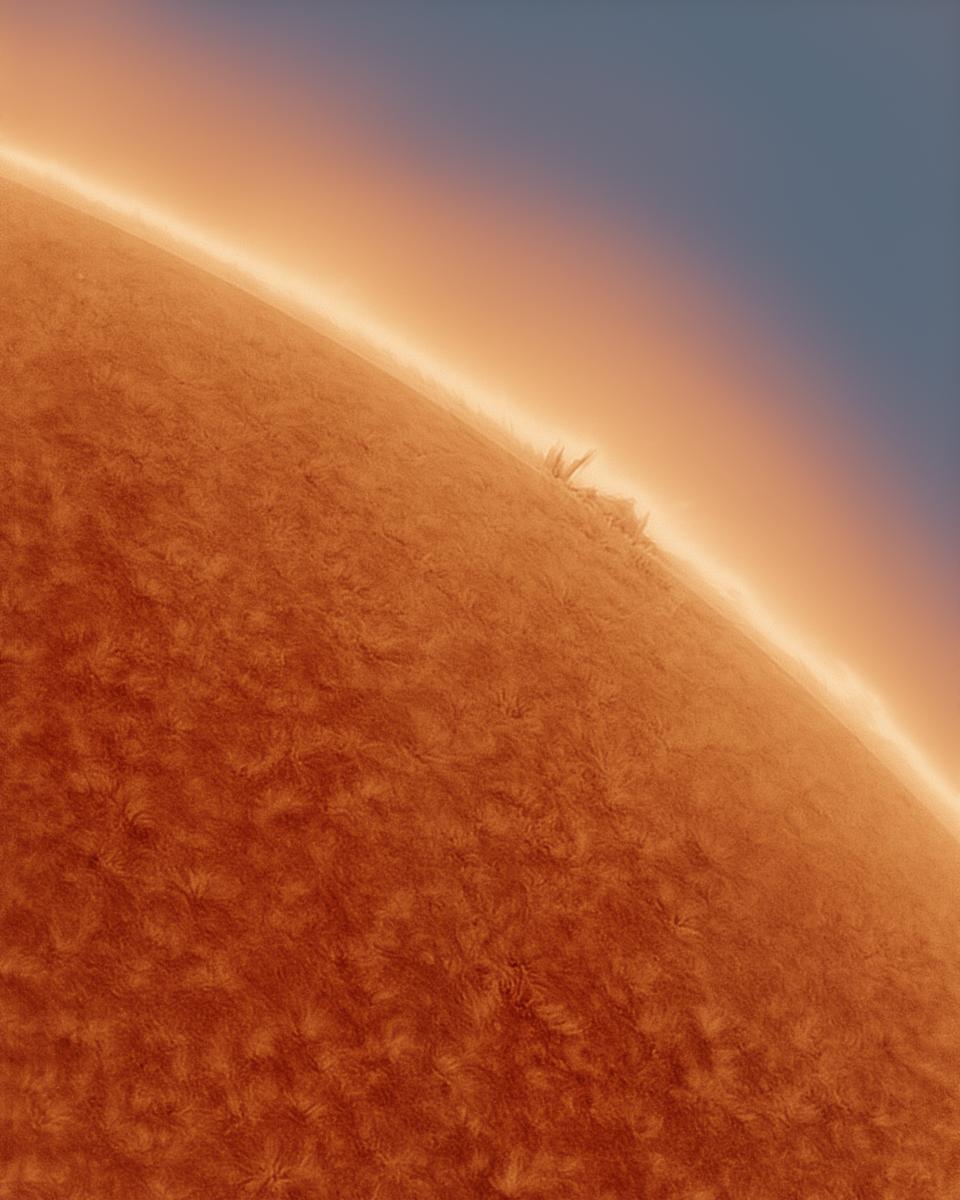
The Sun – Atmospheric Detail © Jason Guenzel (USA) – HIGHLY COMMENDED
Jason Guenzel
Our Sun: Highly Commended
Since the Sun is currently in the least active phase of its 11-year cycle–the “solar minimum”–there’s no usually much for photographers to capture.
However, Jason Guenzel of Milford, Michigan captured this prominence while shooting in the blakc and white H-alpha wavelength. It was colourised to give the impression of the view through Earth’s atmosphere.
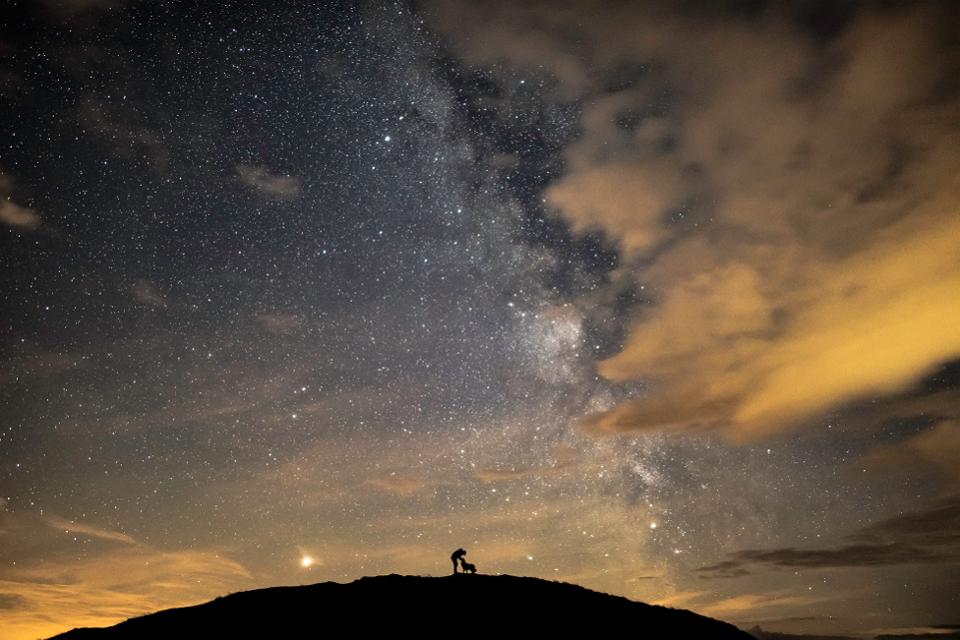
Ben, Floyd and the Core © Ben Bush (UK) – WINNER
Ben Bush
People and Space: Winner
The image from Hadrian’s Wall, Hexham, UK depicts the photographer Ben Bush and his dog, Floyd, surrounded by Mars, Saturn and the galactic core of the Milky Way galaxy. The image contains everything the photographer loves about photography; the relationship with the landscape, family, dogs and friends.
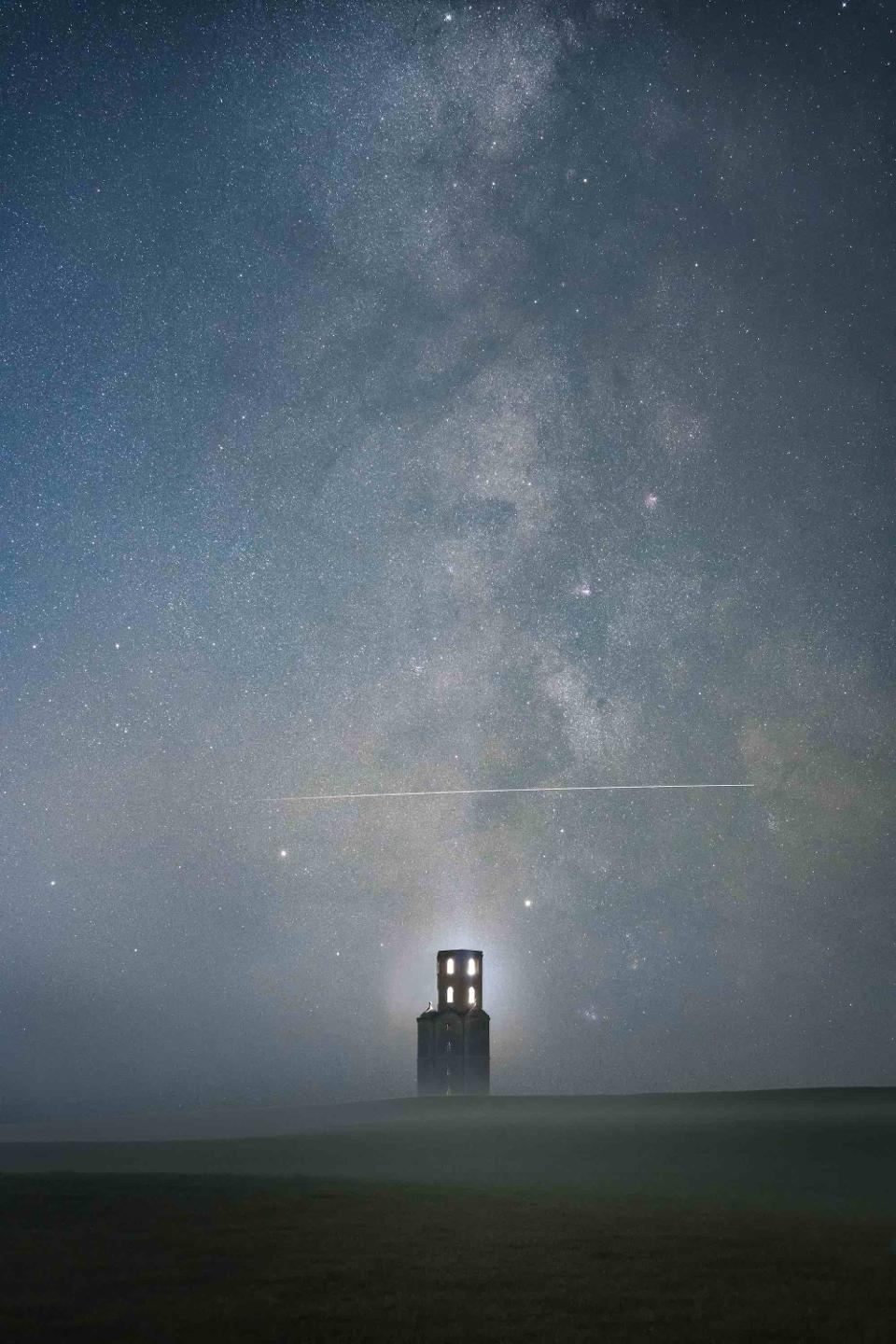
Above the Tower © Sam King (UK) – RUNNER-UP
Samuel King
People and Space: Runner-up
Here’s an image of the International Space Station (ISS) flying over Horton Tower in Dorset, UK on a misty evening.
Horton Tower is believed to have been built with the intention of being used as an observatory. During the two exposures shot for the sky, the photographer was able to perfectly capture the ISS fly directly over the tower. This image is comprised of a long 2-minute exposure for the foreground and then blended with the two tracked 60-second exposures for the night sky.
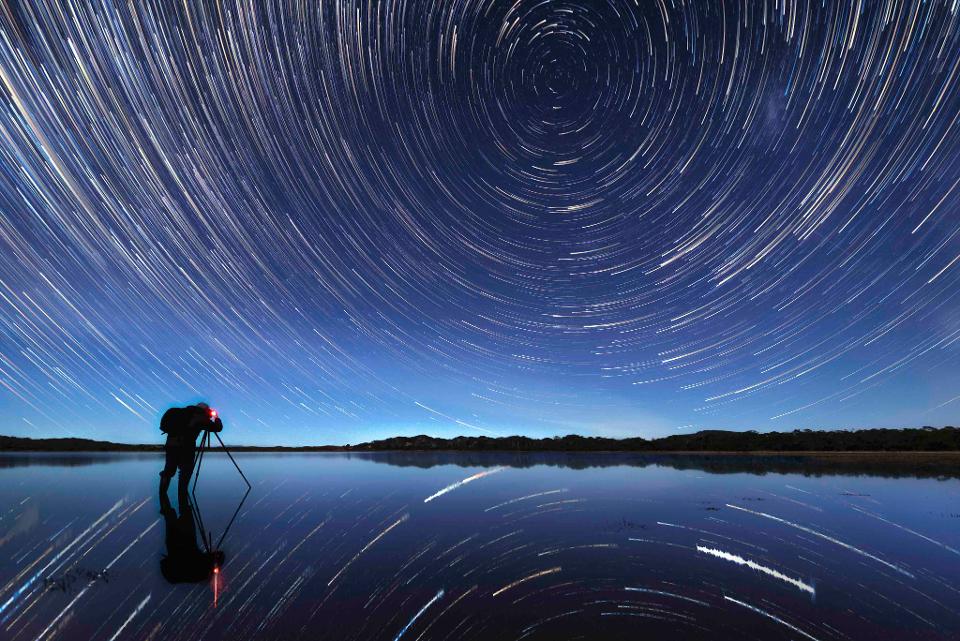
Cosmic Plughole © James Stone (Australia) – HIGHLY COMMENDED
James Stone
People and Space: Highly Commended
This image from James Stone in South Arm, Tasmania is a stacked star trail, combined to show 1.5 hours of the Earth’s rotation through space and time, and reflected on the shallow water of a salt marsh.
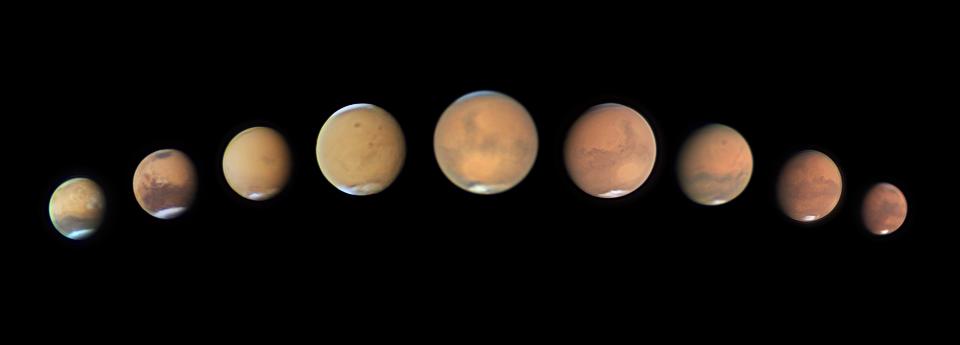
Death of Opportunity © Andy Casely (Australia) – WINNER
Andy Casely
Planets, Comets and Asteroids: Winner
This is a sequence of images from Andy Casely in Sydney, Australia from 2018 that shows the progress of a great global dust storm, which ultimately put paid to NASA’s Opportunity Mars rover.
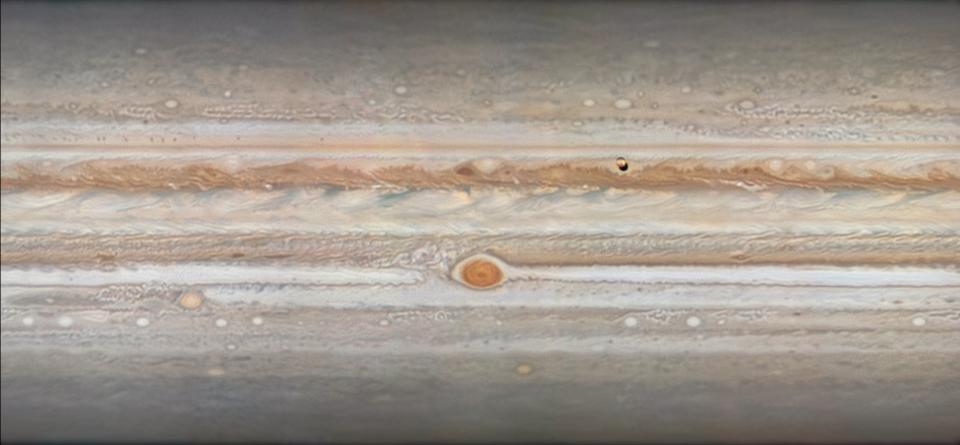
Jupiter Unravelled © Damian Peach (UK) – RUNNER-UP
Damian Peach
Planets, Comets and Asteroids: Runner-up
This view of Jupiter from noted planetary photographer Damien Peach shows the entire face of the planet close to its opposition of 2018. Storms of all shapes and sizes can be seen, along with the famous Great Red Spot near the centre. The moon Io and its shadow are also visible as they were captured in transit.
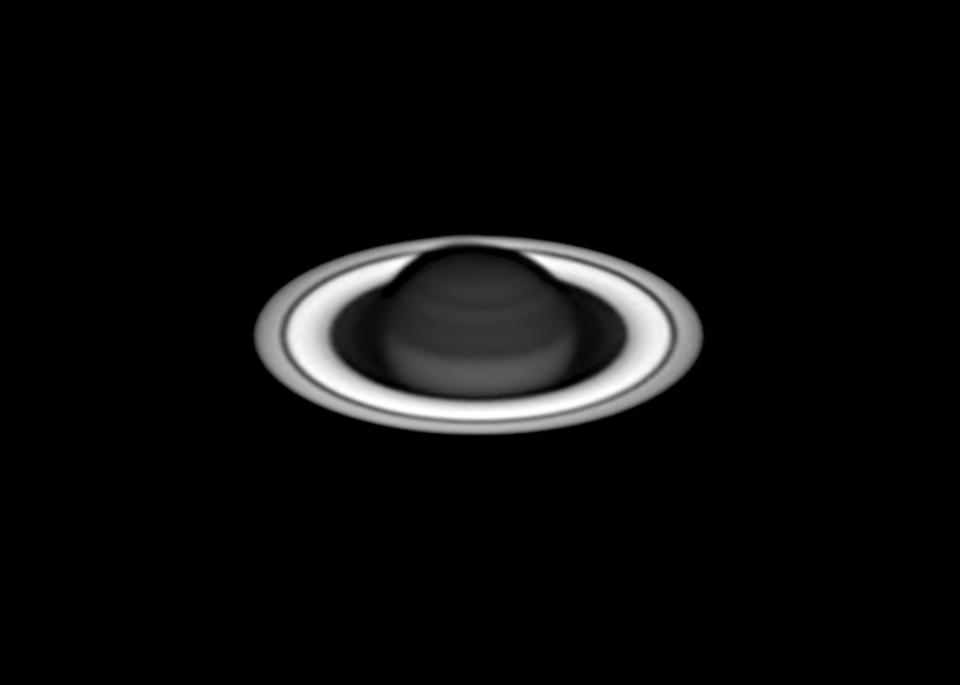
Black Saturn © Martin Lewis (UK) – HIGHLY COMMENDED
Martin Lewis
Planets, Comets and Asteroids: Highly commended
This “Black Saturn” photo from Martin Lewis in St Albans, Hertfordshire was taken using a methane band filter to reveal the high concentrations methane–visible as black rings–in Saturn’s atmosphere.
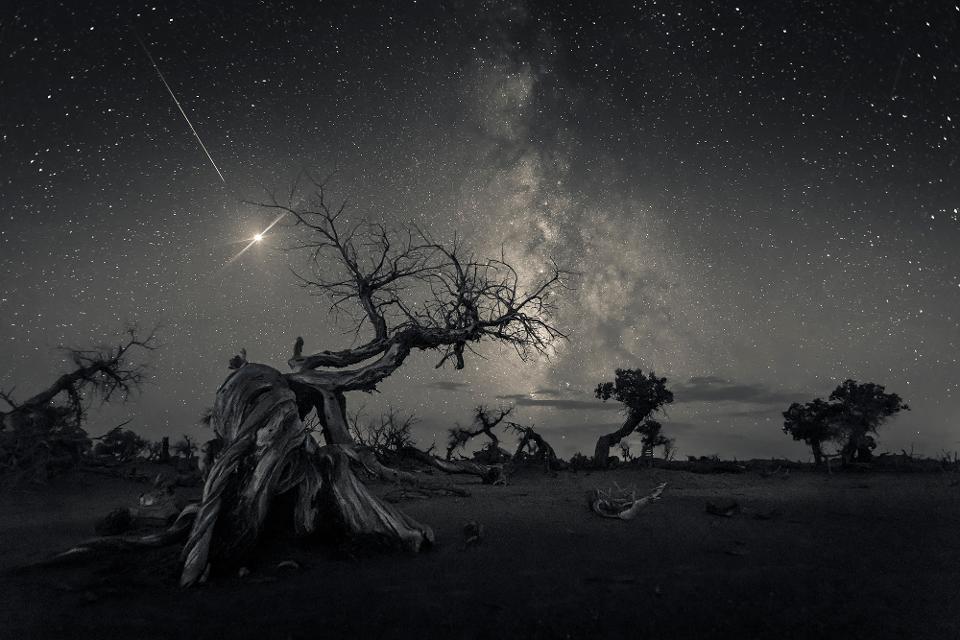
Across the Sky of History © Wang Zheng (China) – WINNER
Wang Zheng
Skyscapes: Winner
This mystical image of a shooting star and withered poplar trees was taken in the Mongolian region of Ejina, in the historical Kingdom of Xi Xia.
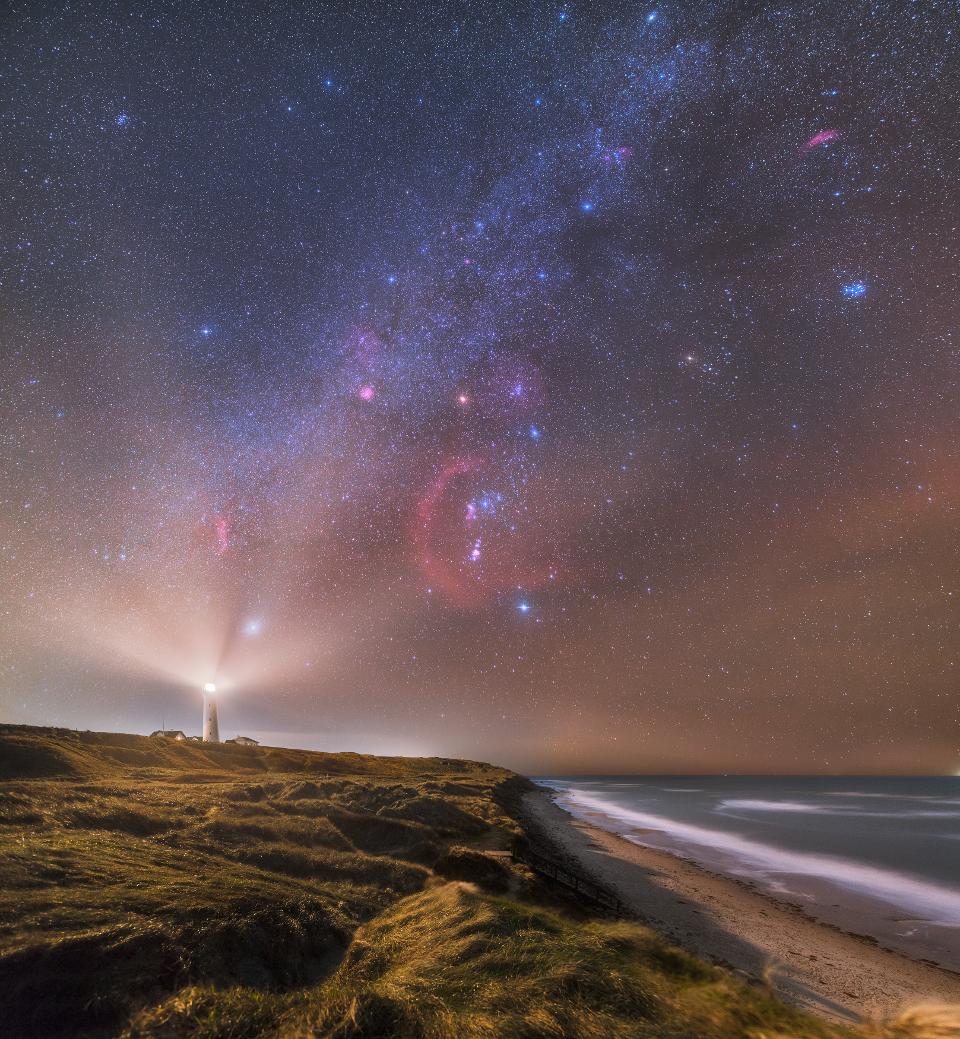
Galactic Lighthouse © Ruslan Merzlyakov (Latvia) – RUNNER-UP
Ruslan Merzlyakov
Skyscapes: Runner-up
This photo, ‘Galactic Lighthouse’ from Latvian photographer Ruslan Merzlyakov, shows Orion setting over Hirtshals Lighthouse in northern Denmark.
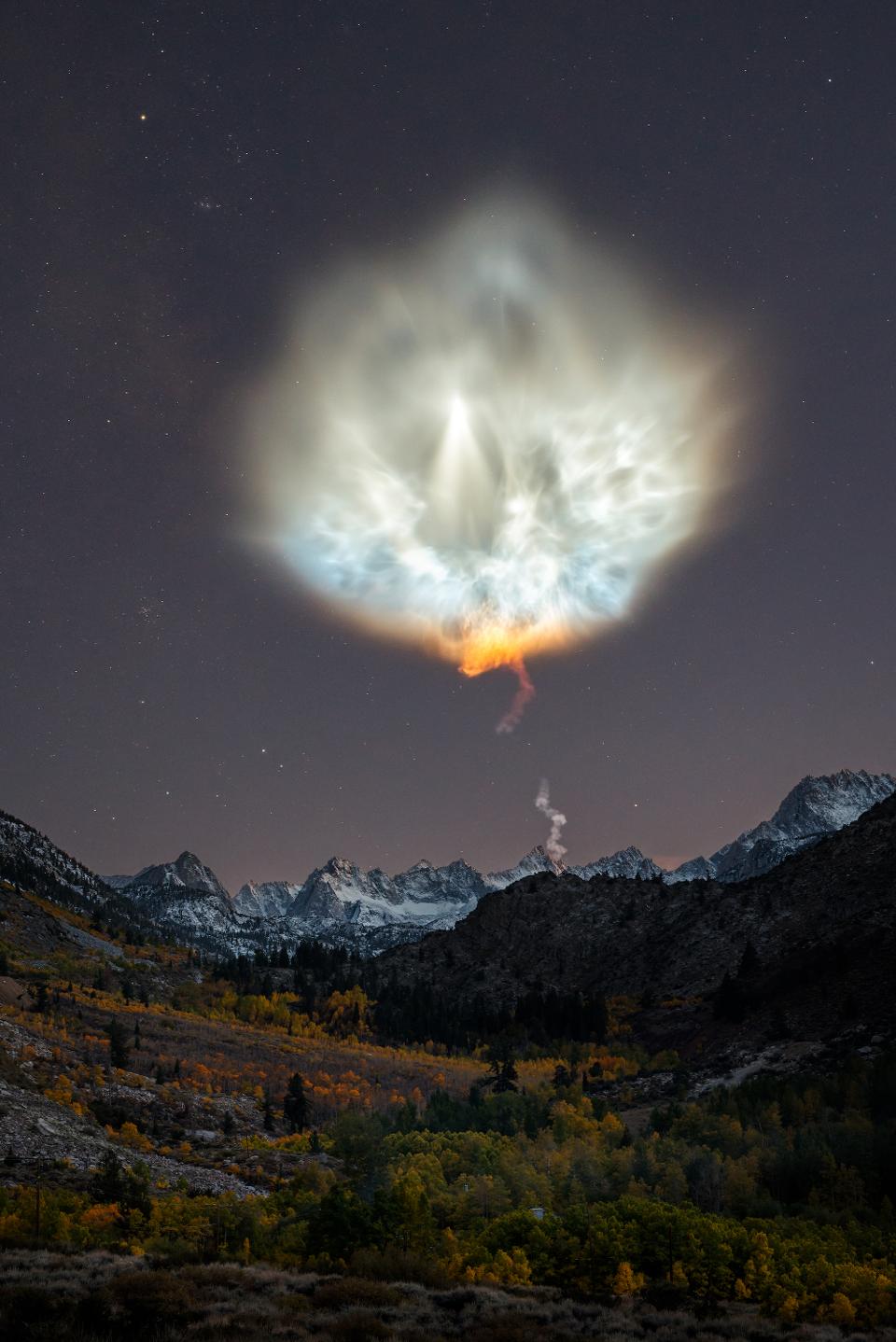
Flower Power © Brandon Yoshizawa (USA) – HIGHLY COMMENDED
Brandon Yoshizawa
Skyscapes: Highly commended
There are many photographers dedicated to capturing SpaceX rockets as they blast-off, but few try to capture the rockets’ plumes. Brandon Yoshizawa’s image ‘Flower Power’, taken from Aspendell, California, does just that, including the exhaust plume from SpaceX’s Falcon 9 rocket launch just after launch.
This photograph was taken with a 50 mm lens which provided a much closer and detailed view. This shot consists of two exposures blended; one for the foreground and one for the sky, with no movement of the camera in between exposures.
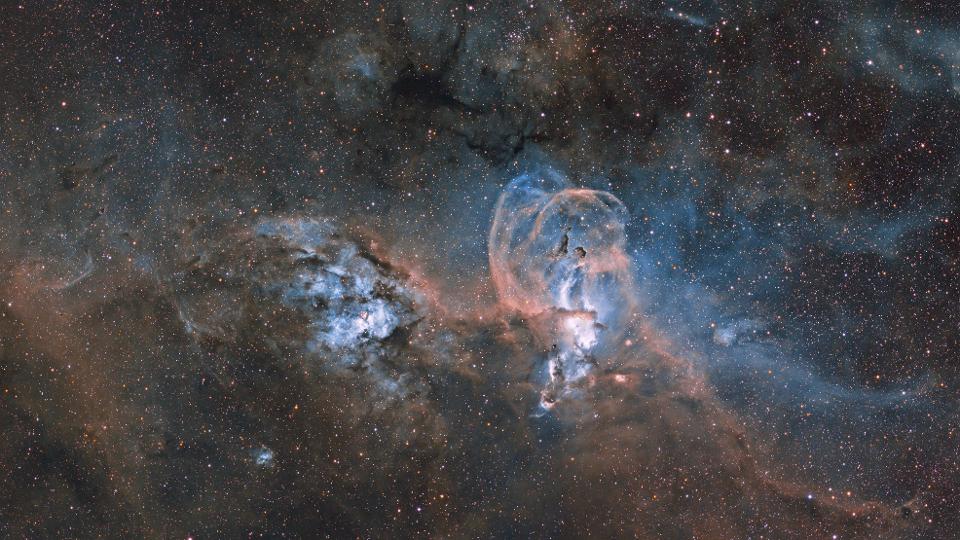
Statue of Liberty Nebula © Ignacio Diaz Bobillo (Argentina) – WINNER
Ignacio Diaz Bobillo
Stars and Nebulae: Winner
On the right is NGC 3576, also known as the Statue of Liberty Nebula, an active stellar nursery, while on the left is the more distant NGC 3603, a much larger but more distant stellar nursery. The image was taken from General Pacheco, Buenos Aires.
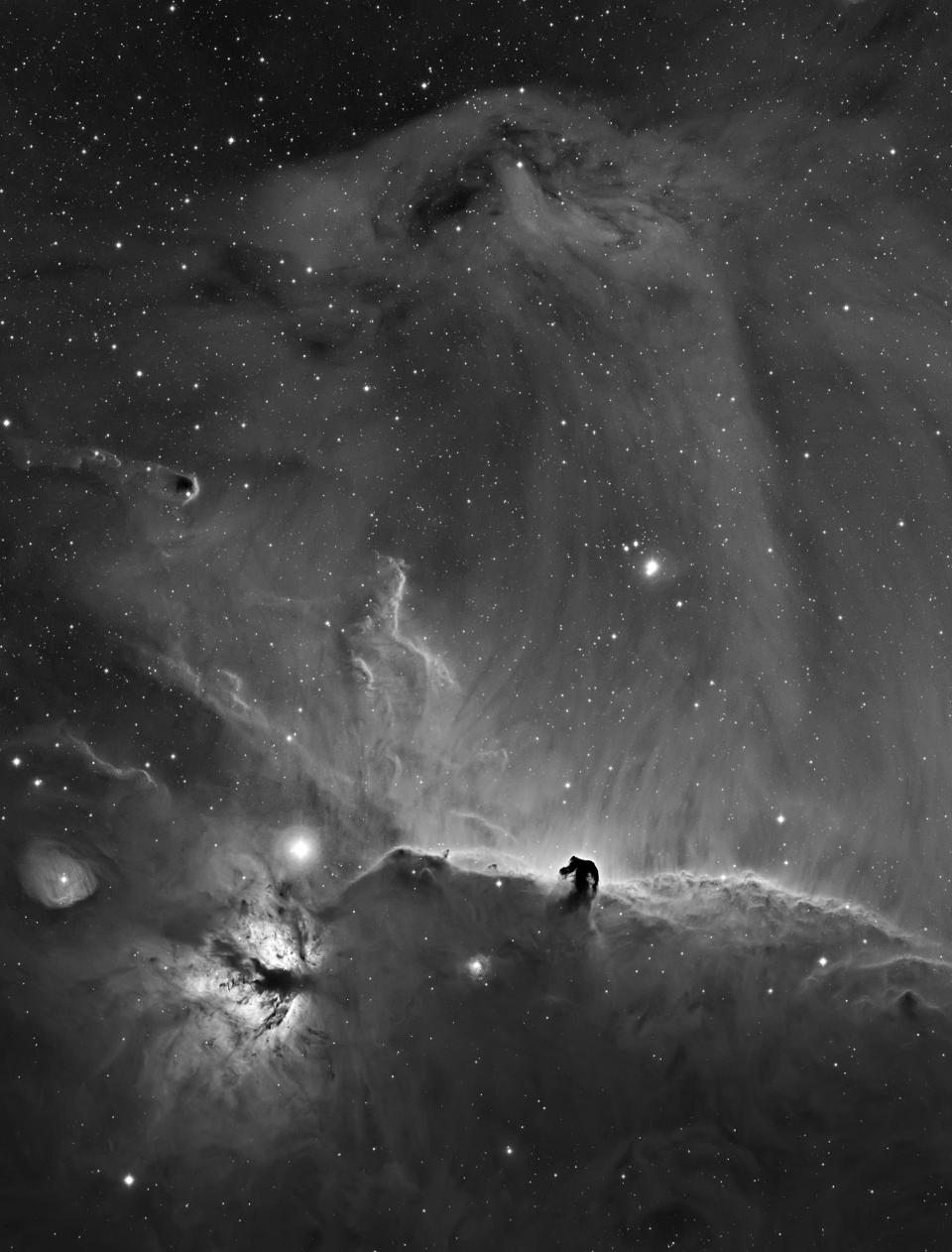
A Horsehead Curtain Call © Bob Franke (USA) – RUNNER-UP
Bob Franke
Stars and Nebulae: Runner-up
The Horsehead Nebula is a small dark nebula in the constellation Orion. Bob Franke’s two-panel mosaic image (right) from Chino Valley, Arizona shows it silhouetted by background hydrogen curtains.
The Horsehead Nebula (Barnard 33) is very difficult to see, even with very large telescopes. In the lower left-hand corner is the Flame Nebula also known as NGC 2024. The entire complex is part of the Orion Molecular Cloud, which is about 1,500 light years from Earth.
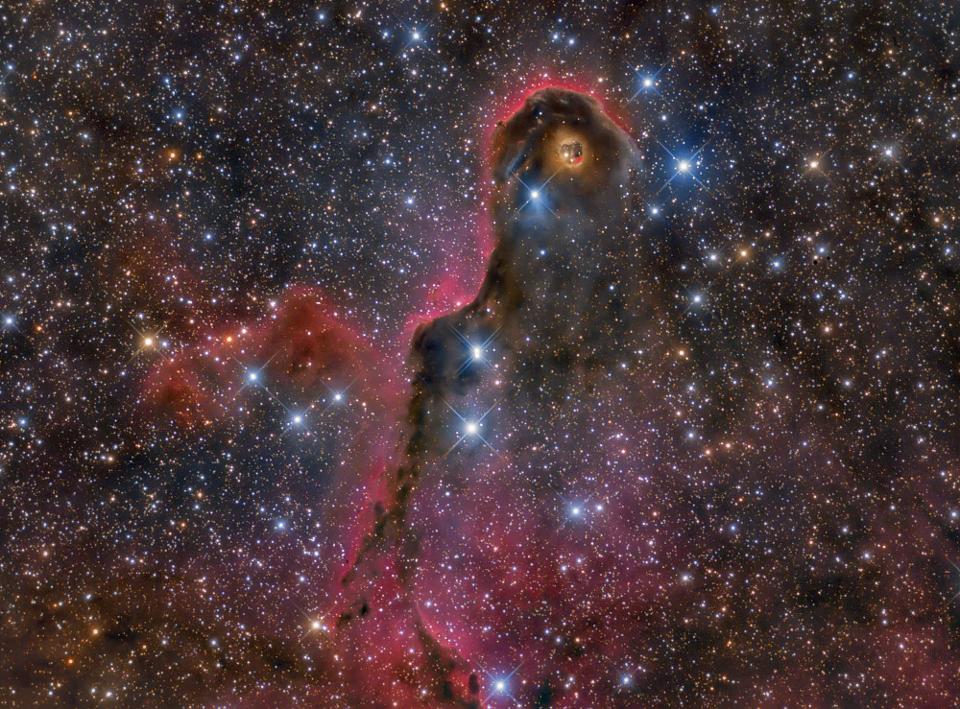
The Elegant Elephant’s Trunk © Lluís Romero Ventura (Spain) – HIGHLY COMMENDED
Lluís Romero Ventura
Stars and Nebulae: Highly Commended
Lluís Romero Ventura’s image from Àger, Spain of the Elephant Trunk Nebula (vdB 142) is part of a region of star formation that lies 2,450 light years away in the constellation of Cepheus and, according to the photographer, is probably one of the most beautiful nebulae that is actively forming stars.
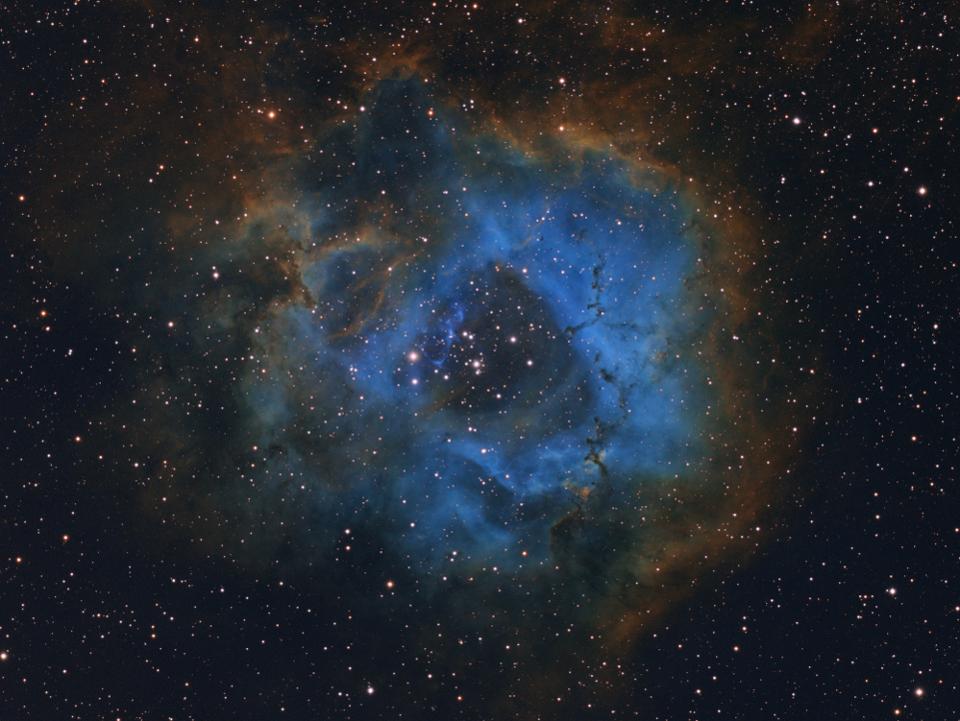
Stellar Flower © Davy van der Hoeven (Netherlands), aged 11 – WINNER
Davy van der Hoeven
Young Astronomy Photographer of the Year: Winner
This ‘Stellar Flower’ image from 11-years old Davy van der Hoeven in the Netherlandsis of the magnificent Rosette Nebula. With the help of his father he built the equipment required and together, over three nights in November, they captured 16 hours 15 minutes images of the Rosette Nebula using different filters.
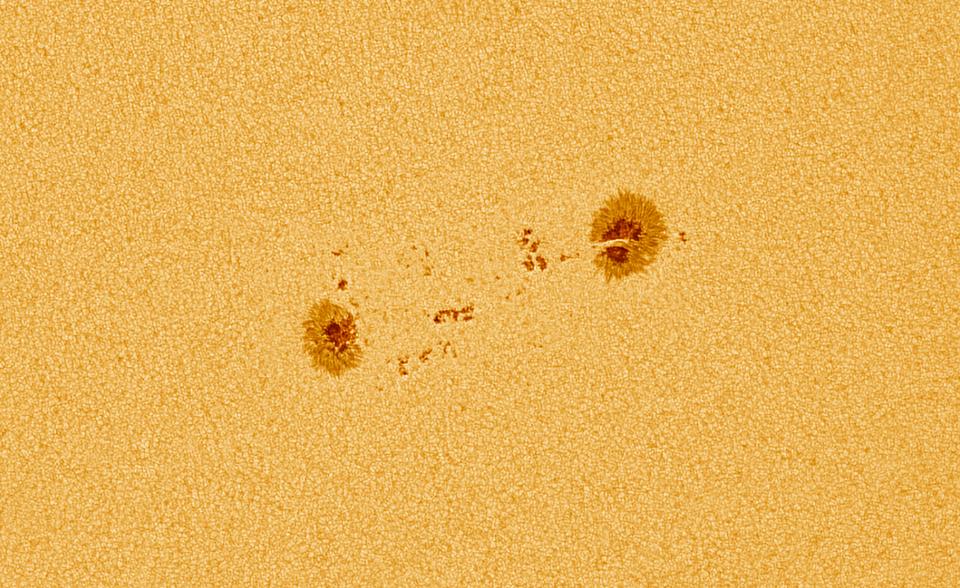
AR 12699 Sunspot © Matúš Motlo (Slovakia), aged 14 – RUNNER-UP
Matúš Motlo
Young Astronomy Photographer of the Year: Runner-up
To capture this sunspot, 14 years old Matúš Motlo from Plevník-Drienové, Slovakia took a video, then ran it through AS!3 software, and sharpened it in RegiStax, making some additional edits.
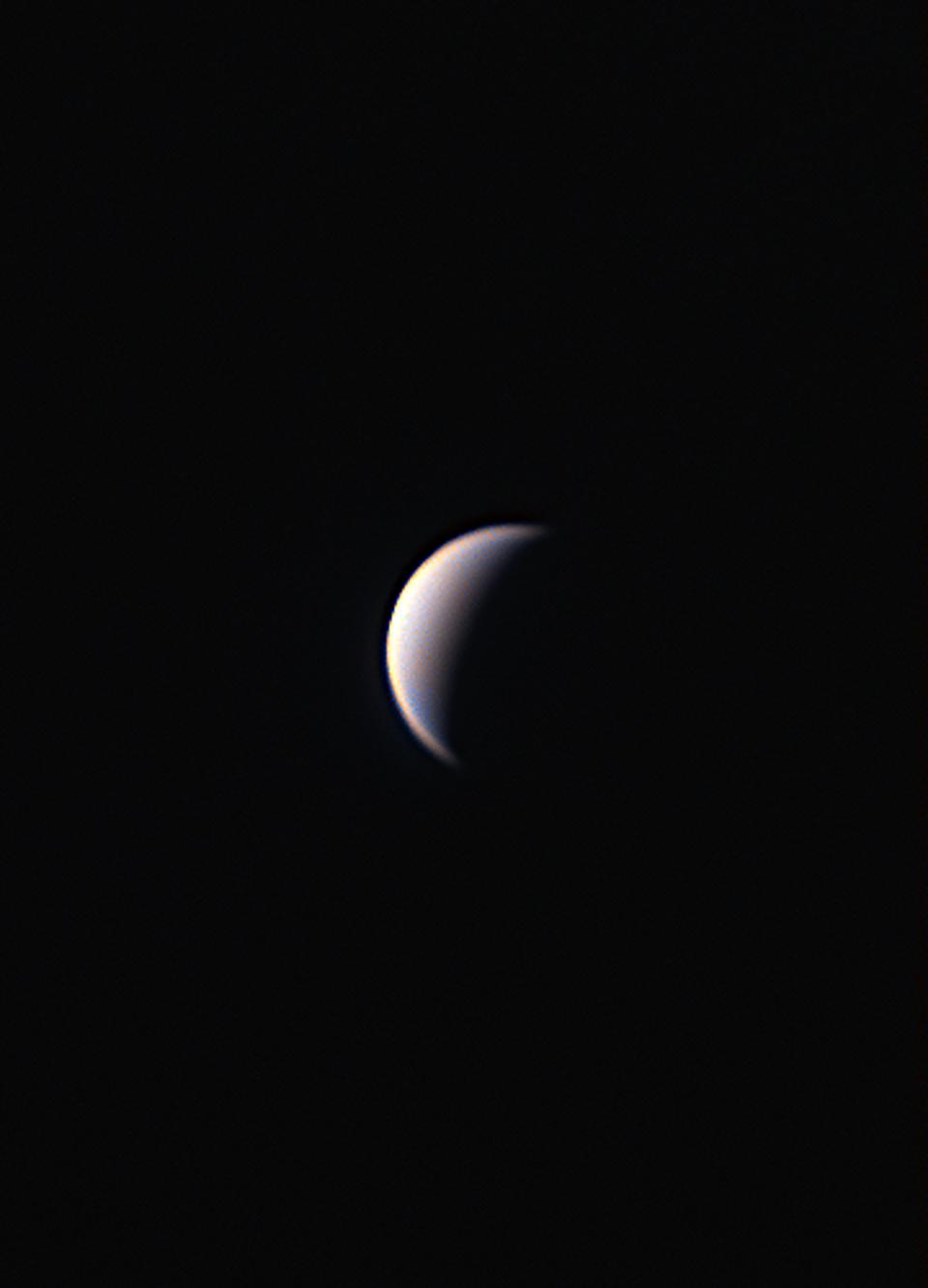
Daytime Venus © Thea Hutchinson (UK), aged 12 – HIGHLY COMMENDED
Thea Hutchinson
Young Astronomy Photographer of the Year: Highly Commended
What’s the brightest planet in our solar system, visible in daylight, and often seen as a crescent? Here, Venus is beautifully photographed by 12 years old Thea Hutchinson from London, UK, using various filters including one to capture the cloud tops of Venus–a thick orange band in the centre of the planet.
Each filtered image was comprised of a stack of the best 25% of 3,000 frames processed in AutoStakkert and Registax, with the final image constructed in Photoshop. Astrophotography is hard and time-consuming!
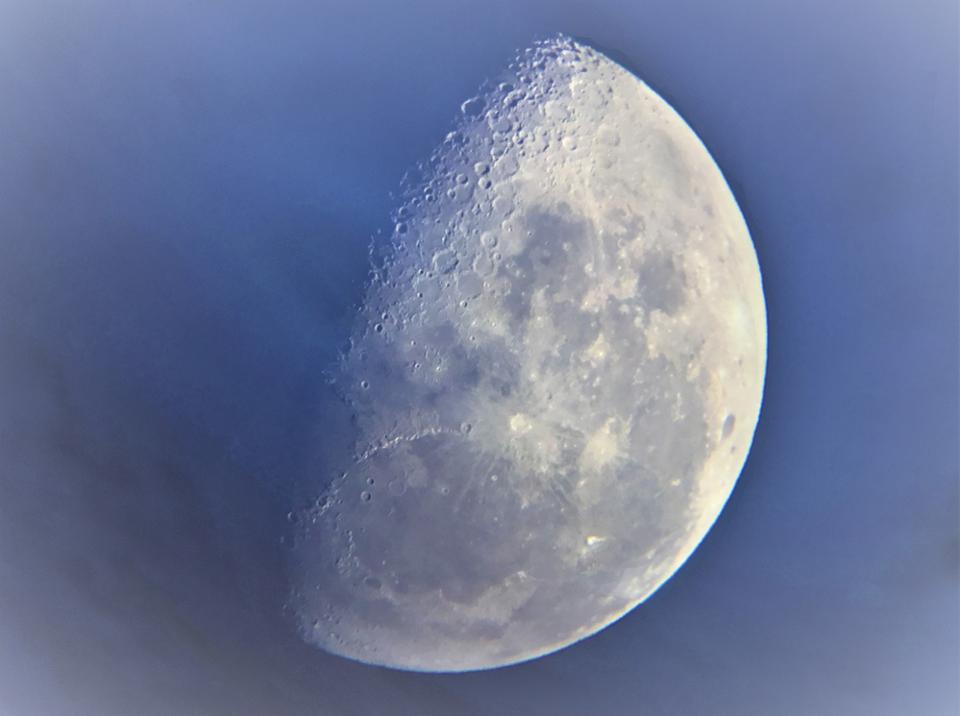
Van Eyck’s Moon © Casper Kentish (UK), aged 9 – HIGHLY COMMENDED
Casper Kentish
Young Astronomy Photographer of the Year: Highly CommendedCaptured using a small telescope and an iPad, this image is based on the painting ‘The Crucifixion; The Last Judgment, ca. 1440–41’, by Jan van Eyck, where a daytime Gibbous Moon is rising over Jerusalem. The depiction of the Moon is turned 180° compared to Van Eyck’s moon, but Casper Kentish of Ponthirwaun Ceredigion, Wales, UK–just nine years old–prefers this version.
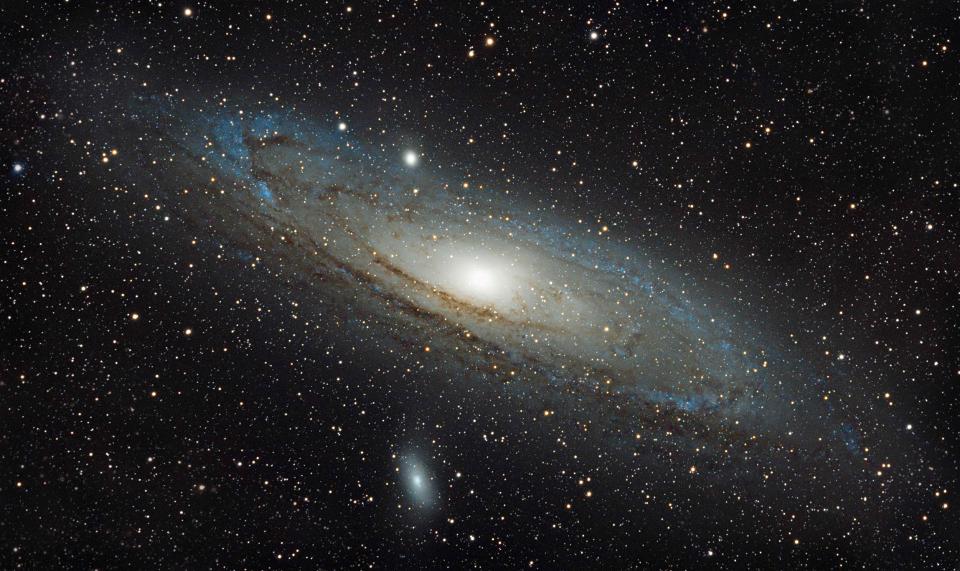
M31 Andromeda Galaxy © Tom Mogford (UK), aged 15 – HIGHLY COMMENDED
Tom Mogford
Young Astronomy Photographer of the Year: Highly Commended
15 years old photographer Tom Mogford from the UK chose Andromeda because although it has the width of six moons it cannot be seen with the naked eye, yet once imaged it reveals a vibrant expanse of dust and stars. The image was taken over several nights in the summer of 2018 in Goult in the south of France.
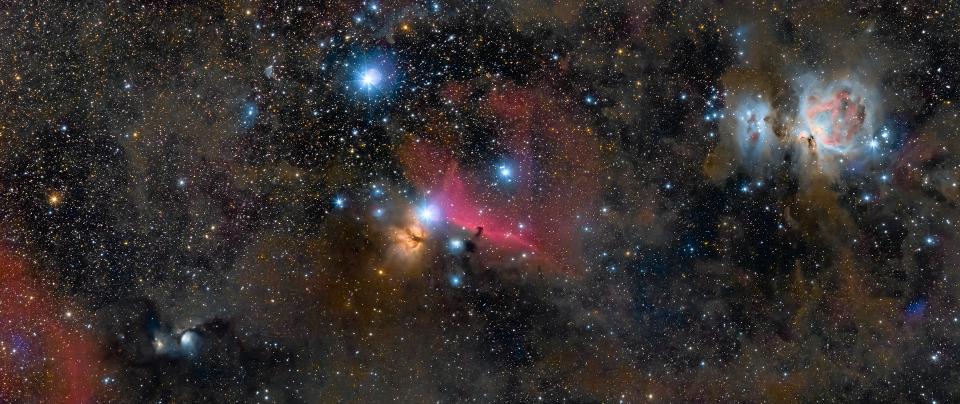
The Jewels of Orion © Ross Clark (UK) – JOINT WINNER
Ross Clark
Sir Patrick Moore Prize for Best Newcomer: Joint Winner
This strip of the Orion constellation includes some of the best targets in the Northern Hemisphere using a modest Canon 450D astro-modified camera and a small telescope. It was shot from Embleton, Northumberland, UK.
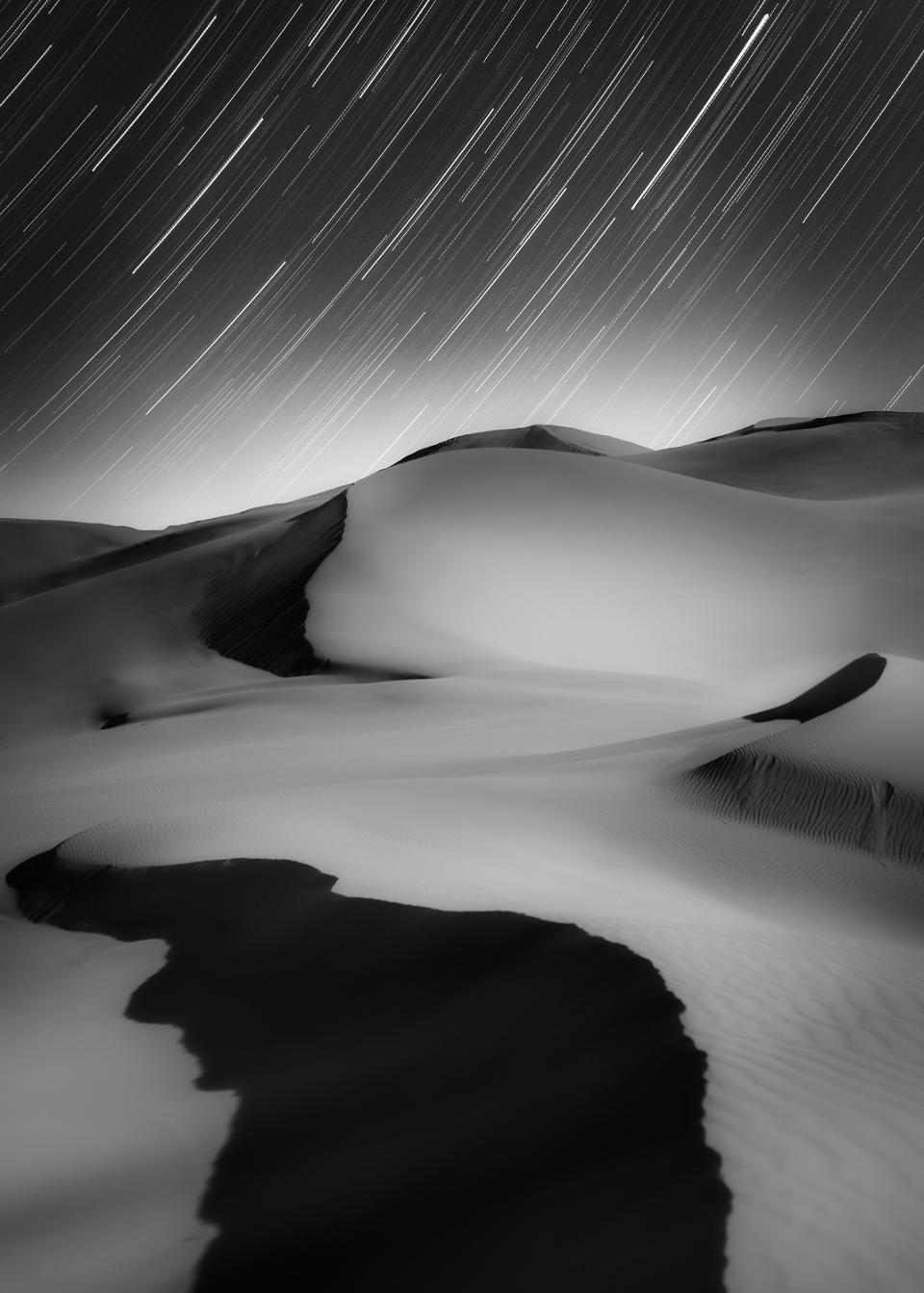
Sky and Ground, Stars and Sand © Shuchang Dong (China) – JOINT WINNER
Shuchang Dong
Sir Patrick Moore Prize for Best Newcomer: Joint Winner
Shot from Ningxia, China by photographer Shuchang Dong, this image called ‘Sky and Ground, Stars and Sand’ was taken when the Moon was shining bright over the sand dunes of north-central China.
After enjoying a sunset and the rise of the Moon, Dong began to take photos of the magnificent starry sky using a Canon EOS 5D Mark IV camera.
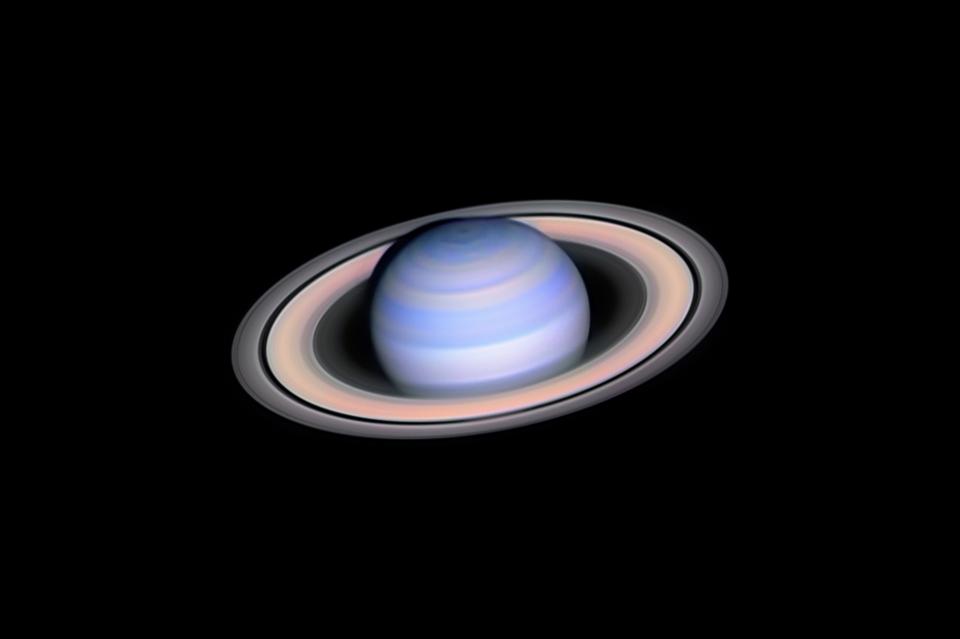
Infrared Saturn © László Francsics (Hungary) – WINNER
László Francsics
Robotic Scope: Winner
Infrared Saturn © László Francsics (Hungary) – WINNER
Here we come full circle with a final image also taken by László Francsics, the same photographer who won the overall prize for ‘Into the Shadow.’ This image reveals the very near infrared colours of Saturn, using the combination of the red and other two infrared planetary filters. It was taken remotely using Chilescope in Chile’s remote Atacama region.
“Each year the competition attracts the most awe inspiring astrophotography taken from across the globe and this year was no exception,” says Steve Marsh, Art Editor at the BBC Sky at Night Magazine, and a judge for the competition. “There was also a real drive by imagers to capture rare celestial objects and to push their equipment further than ever before. That astronomy can inspire such passion and devotion is something we can all be very proud of.”
Insight Investment Astronomy Photographer of the Year is run by the Royal Observatory Greenwich in association with Insight Investment and BBC Sky at Night Magazine.
Wishing you clear skies and wide eyes.






